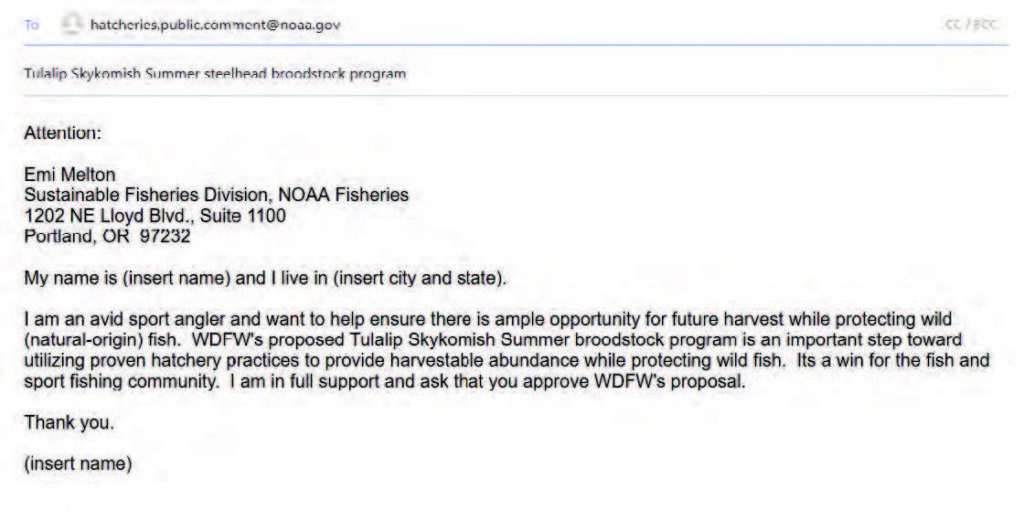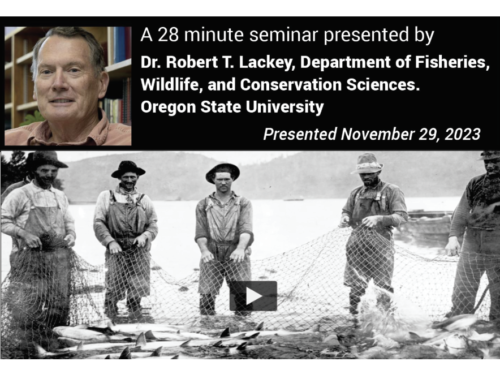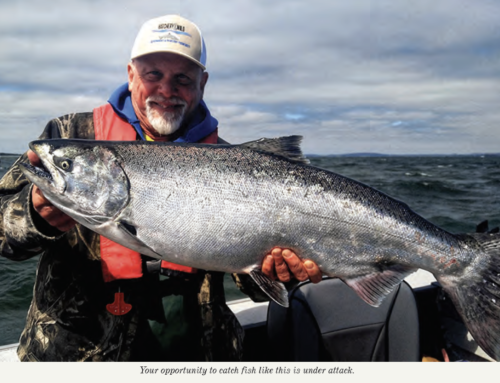An important aspect of any successful campaign is reacting to opportunities for input on mission critical issues. As the need arises, we will issue a Call to Action to help rally support while providing background information so that our supporters can make informed decisions.
Call to Action
Show your support for the Tulalip Skykomish Summer broodstock program! NOAA Fisheries is asking for public input on WDFW’s proposed Tulalip Skykomish (TS) Summer steelhead broodstock hatchery program that would utilize natural-origin fish from the river’s South Fork. The natural-origin fish would replace out-of-basin Skamania-strain steelhead that are being phased out of production.
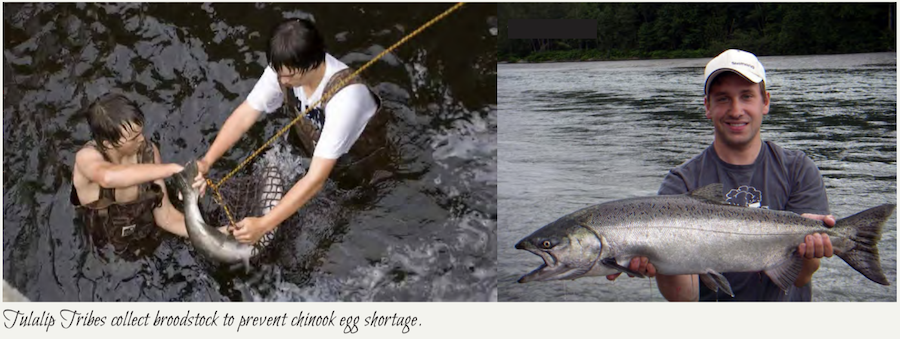
The concept behind broodstock programs is to use a small portion of returning wild (natural-origin) fish as the parents of the next generation of hatchery reared fish. Similar programs in Oregon and British Columbia have been effective, providing high quality fish for harvest that exhibit physical and genetic traits very similar to their natural-origin cousins.
Broodstock programs have also been used successfully to increase the number of wild fish with little negative effect on naturally occurring stocks. A study (Hess et al. 2012) of a broodstock program using remnant wild Chinook in Johnson Creek, a tributary to Idaho’s Clearwater River, found that hatchery supplementation did provide a boost to the natural population. The program started with just five spawning pair (10 fish) and has progressed to substantial returns. The study also showed that generally there is equal reproductive success of hatchery and wild fish and salmon reared for a single generation in the hatchery have a limited and undetectable effect on the fitness of wild-origin fish.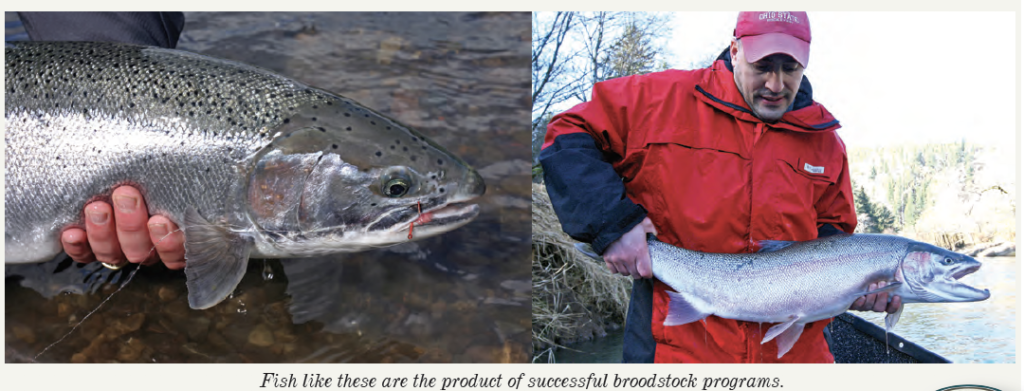
Genetics have been a concern and science shows insignificant impact on genetic structure and diversity by wild steelhead broodstock programs over extended periods. A study (Gow et al. 2011) of five rivers in British Columbia (BC) over a 58-year period showed negligible impact on genetics. According to the research, “…hatchery supplementation can occur to help increase harvest levels with little detectable influence on the genetic characteristics that we assayed. In this sense, the steelhead hatchery (broodstock) program in many parts of BC may be considered successful; i.e., harvest opportunities have increased with no detectable effect on the wild component of the populations.” (emphasis added)
If approved, the proposed TS Summer steelhead broodstock program would use in-basin steelhead that have been collected at a fish trap since 1958 and is supported by a host of stakeholders. In fact, after three years of rigorous work the Puget Sound Steelhead Advisory Group (PSSAG) included the TS Summer steelhead program as one of their recommendations.
The PSSAG included representation from the Wild Fish Conservancy (WFC) that has now filed legal notice of their intent to sue WDFW for allegedly “capturing and killing wild summer steelhead” for the program without a federal permit. In typical fashion, the WFC is focused on an alleged bureaucratic technicality rather than doing the right thing for our fish and fisheries.
This proposed program is a big deal and could be a defining decision for future Puget Sound, and beyond, consumptive fisheries. Please take advantage of this opportunity to voice your support for the Tulalip Skykomish Summer steelhead program.
The comment period on this initial proposed evaluation and pending determination, or PPED, of the WDFW proposal closes Jan. 21. You can email your thoughts to hatcheries.public.comment@noaa.gov or mail them to:
Emi Melton
Sustainable Fisheries Division, NOAA Fisheries
1201 NE Lloyd Blvd., Suite 1100
Portland, OR 97232
HWC will be submitting comments in support of the TS summer steelhead broodstock program and your added encouragement will make a positive difference. Comments do not need to be lengthy or complicated and using your own words increases effectiveness. To help make it a little easier we have put together draft comments that should be personalize and cut and pasted into an email or letter.
You can bet that the WFC and its supporters will take advantage of this opportunity to try and black ball your fishing future. Let’s not allow that to happen.
Draft comments –
Attention:
Emi Melton
Sustainable Fisheries Division, NOAA Fisheries
1201 NE Lloyd Blvd., Suite 1100
Portland, OR 97232
My name is (insert name) and I live in (insert city and state).
I am an avid sport angler and want to help ensure there is ample harvestable hatchery fish while protecting wild (natural-origin) fish. WDFW’s proposed Tulalip Skykomish Summer broodstock program is an important step toward utilizing proven hatchery practices that provide harvestable hatchery abundance and do not unreasonably jeopardize wild fish populations. It is a win for the fish and sport fishing community.
I am in full support of the proposed Tulalip Skykomish Summer broodstock program and ask that you approve WDFW’s application.
Thank you.
(insert name)
Your email should look something like this:
